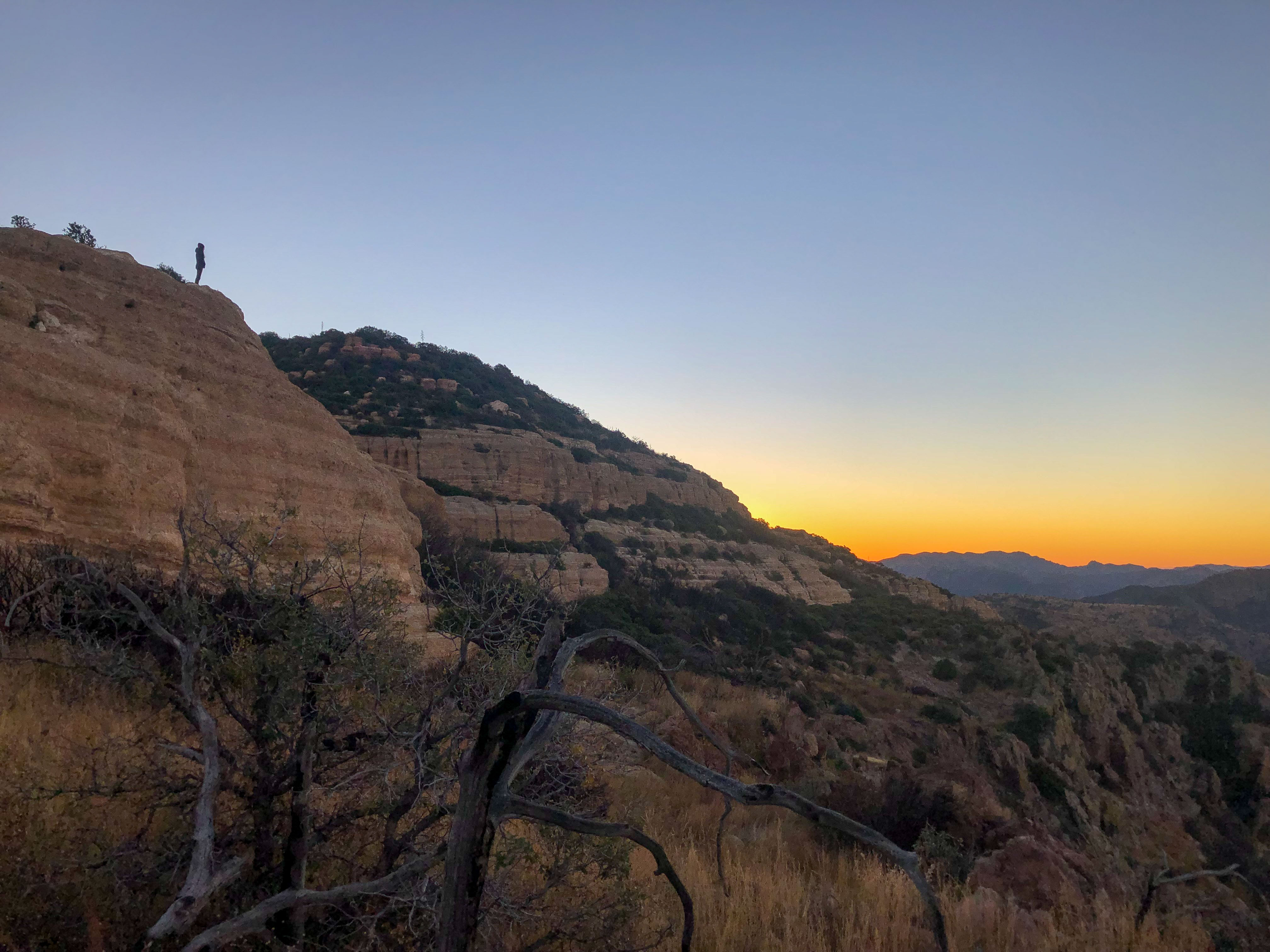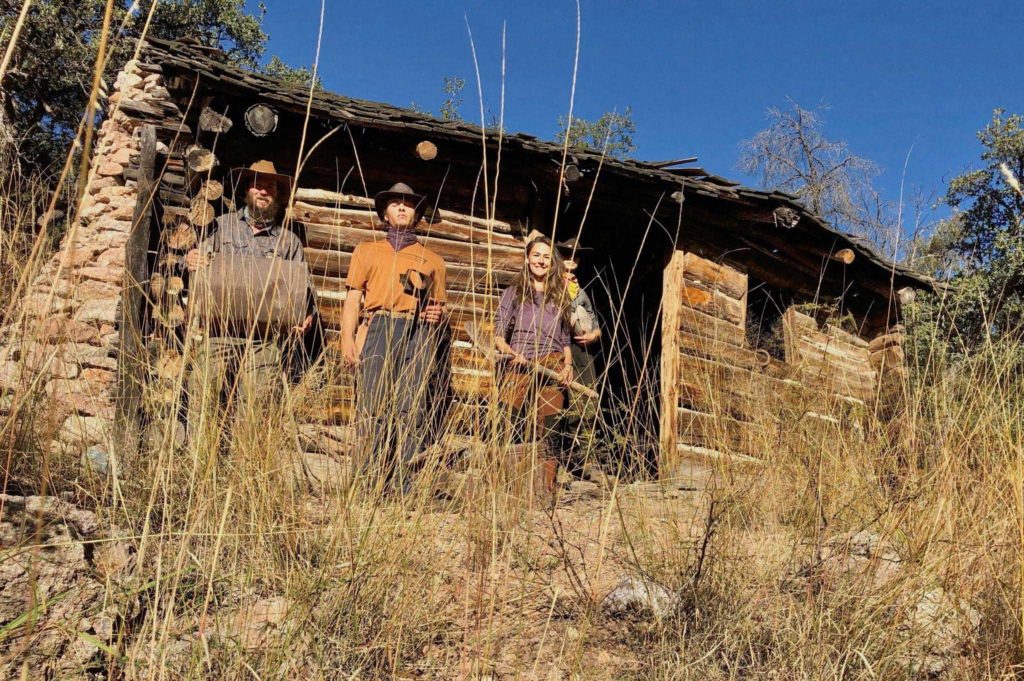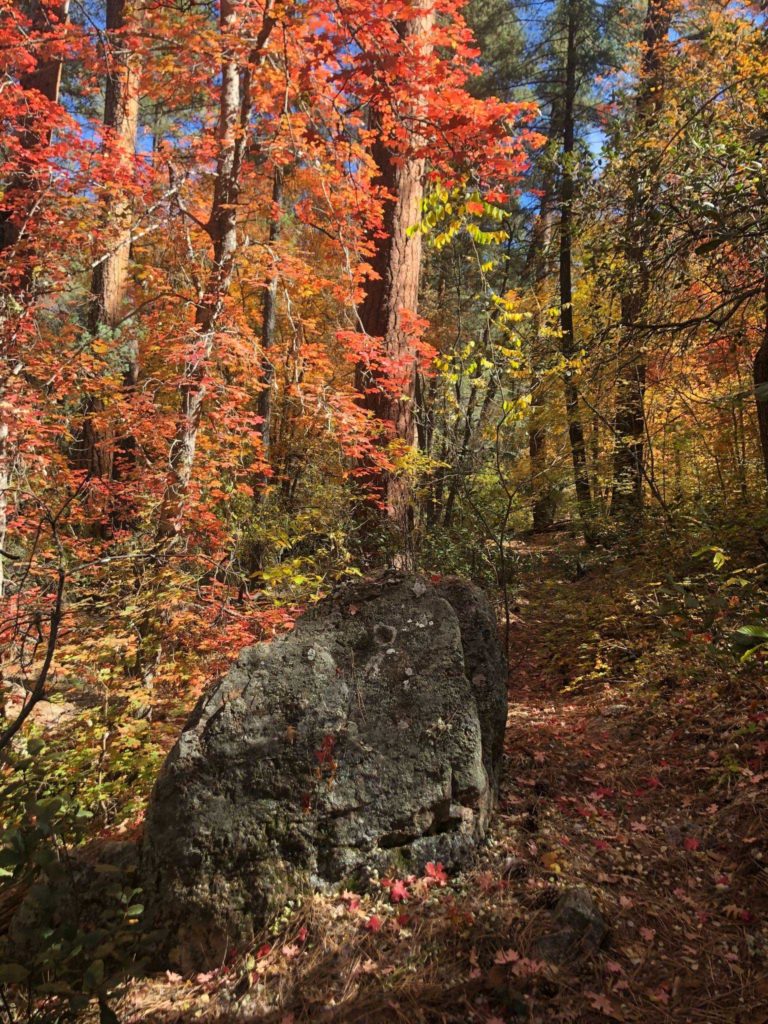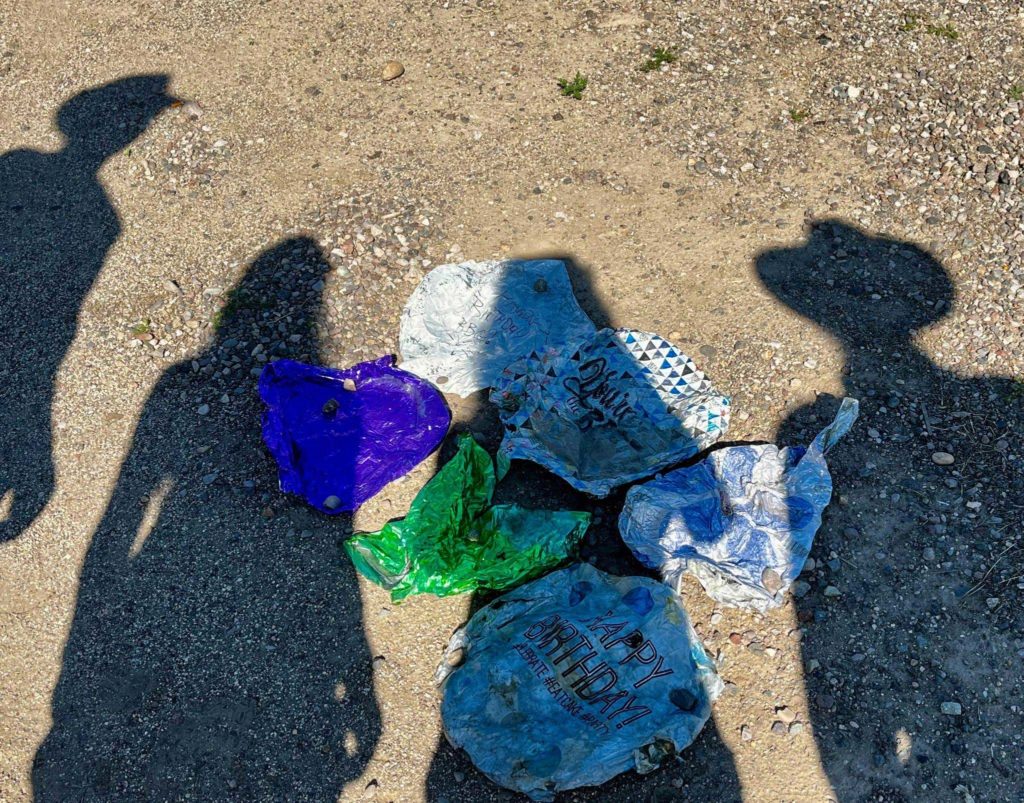
Written by Dexter Kopas, Wild Stew Field Crew Member.
On this edition of the Wild Stew Field Crew, we once again did something exciting that was not trail maintenance: trail assessment! It is important for the Forest Service to have an updated inventory of trail conditions, in order to determine where, when, and with what resources certain trails need to be worked on. So, to that end, Taylour Stephens, Jonathan Patt, Lauren Renteria, and Dexter Kopas took to the Coronado National Forest’s Galiuro Wilderness and walked on every trail (sometimes finding nothing more than overgrown, sloped-out dirt sliding down a mountain). Over an eight-day backpacking trip, the crew, split up in two teams of two, catalogued approximately 160 miles of trail, taking detailed notes on what they found.

While following GPS tracks showing where the Forest Service system trails are supposed to be, they at times found only thick masses of cat claw, manzanita, and oak. Sometimes the experience was simply scrambling over rocks in a canyon bottom, every few hundred feet working up the courage to take a gander into the brush up on the floodplain to see if any semblance of trail could be found. Other times it would be walking an open meadow trying to find evidence that boots had hit the ground sometime in the last decade. The plus side to all this was that in the moments when good trail was found, the crew could deeply appreciate the work put in by the Forest Service, contracted crews, volunteers, and just hikers with determination who collaborated to make the euphoric experience of walking a perfectly maintained trail through rugged and beautiful wilderness.

What the crew did find throughout the whole eight-day hitch was adventure. One of the major highlights was staying in four old abandoned cabins built by families who lived in the mountains over the last 200 years. Powers Cabin, Powers Garden Cabin, Jackson Cabin, and Hooker Cabin are all available shelters for anyone willing to march out to them. The structures are generally well maintained and cleaned, complete with cots, brooms, wood stoves, propane, water jugs, even a guitar in Powers Garden Cabin, though you may have to use hot sauce to fill in the guest book, as working pens can be hard to come by. Other evidence of past human life is found in two mineshafts up to 200 feet deep and the magical Holdout Spring. There, waters emerge from a habitable cave complete with spring box, fireplace, ladder, and pictographs. With three quarters of the crew wearing stylish leather sun hats, there were wonderful opportunities to take Trail Gothic photos in these places where history comes alive.

The natural setting in the Galiuro Wilderness was sublime. Not a drop of rain fell and the temperatures ranged from the cool, comfortable 40’s at night in the canyon bottoms to the not-too-toasty low 80’s in the midday sun. The fall colors on the trees were off the charts. A full rainbow was a frequent sight, from massive green Arizona Cypress to yellow aspens to orange Gambel Oaks to red Canyon Maples. The landscape throughout the range changes considerably, from dry rocky canyons to thickly forested streams to grassy ridge tops showing views from San Jose peak in Mexico to the Four Peaks in the Mazatzals. When used as campsites the peaks played host to beautiful sunsets and sunrises to give a sigh of relief after long days of bushwhacking. As for wildlife, the crew got to experience black bears, bats hanging in caves, frogs, way too many flies, Western Screech Owls, dead moths in the watering holes, and the unquestionable highlight, two Elegant Trogons. The birds are a rare sight at this time of year this far north, usually staying for just the spring-summer breeding season in the southeasternmost ranges of Arizona.

While exploring the 76,317-acre wilderness, the crew saw only four other groups of hikers in an area just 35 miles from Tucson as the crow flies. With hardly anyone else to interact with, the crew found fun ways to avoid getting sick of each other. Whether it was by dressing up in a Swedish Fish costume to surprise passing hikers, waking up on halloween to dramatically reveal a mask hidden at the bottom of a pack for four days, or collaborating to make interesting new backcountry meals, such as a breakfast of nutella and banana nut oatmeal, a “lunch delight” of cheese, peanut butter, sausage, and cracker, or a dinner of rice, beans, risotto, tuna, and chili cheese fritos. The whole crew of four was lucky enough to meet up for one night at the historic Powers Cabin halfway through the trip to exchange halloween costumes, candy, and stories.

It was an eventful and enriching work week, the longest backpacking trip without a resupply for any of us. After some rest time, the crew is excited to return to put tool to trail in the next hitch when they head back to the South Fork Trail in the Chiricahua Wilderness to work on a major post-storm reroute. Tune in in two weeks to hear of all their exploits. If you can’t wait that long, head to our volunteer page to find out how you can get involved with us. Our next event is on the Chiricahuas’ Burro Trail from Nov. 6 to Nov. 7, 2021. You can also learn the history of the Deer Creek Trail on location in the Mazatzals Nov. 12 to Nov. 14, 2021.

The crew taking in the wealth of balloons, having floated away from parties many miles away, found scattered throughout the mountains. Photo by Taylour Stephens. 
Pools of water in Pipestem Canyon. Photo by Jonathan Patt.








